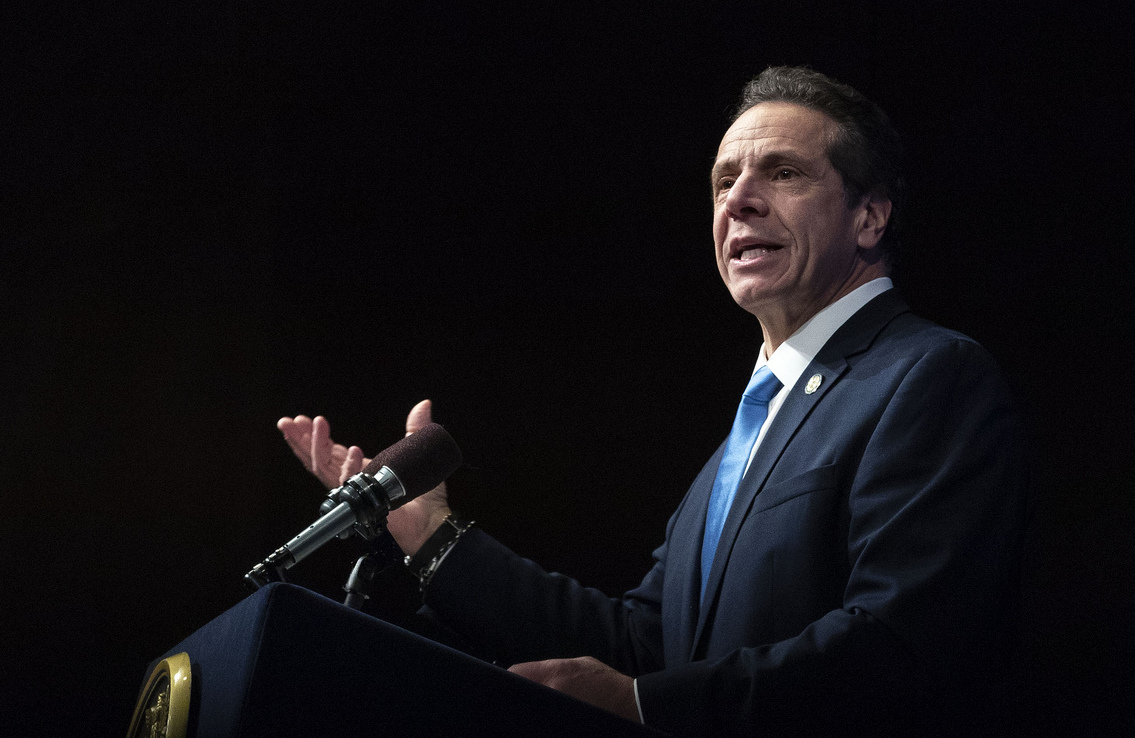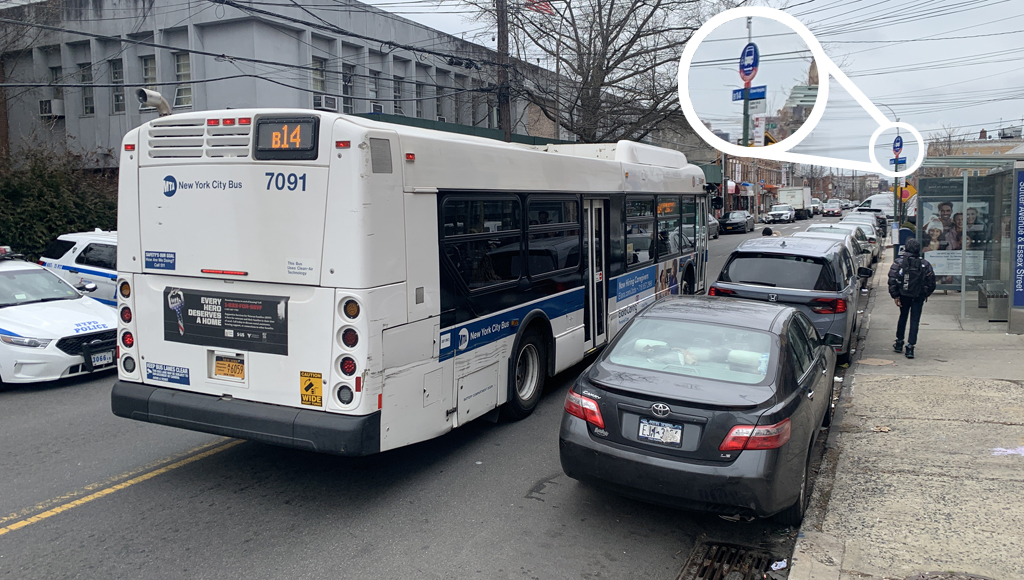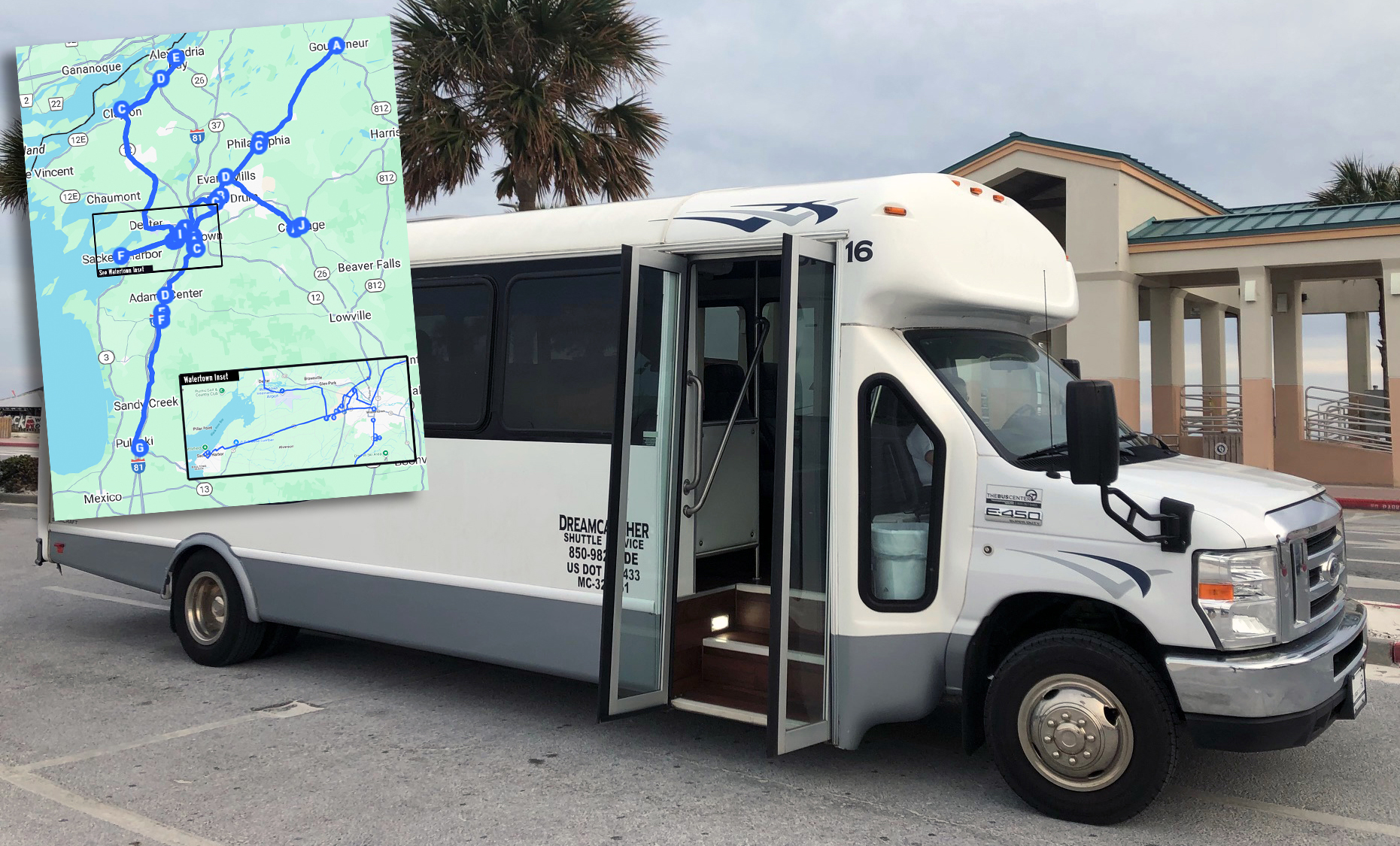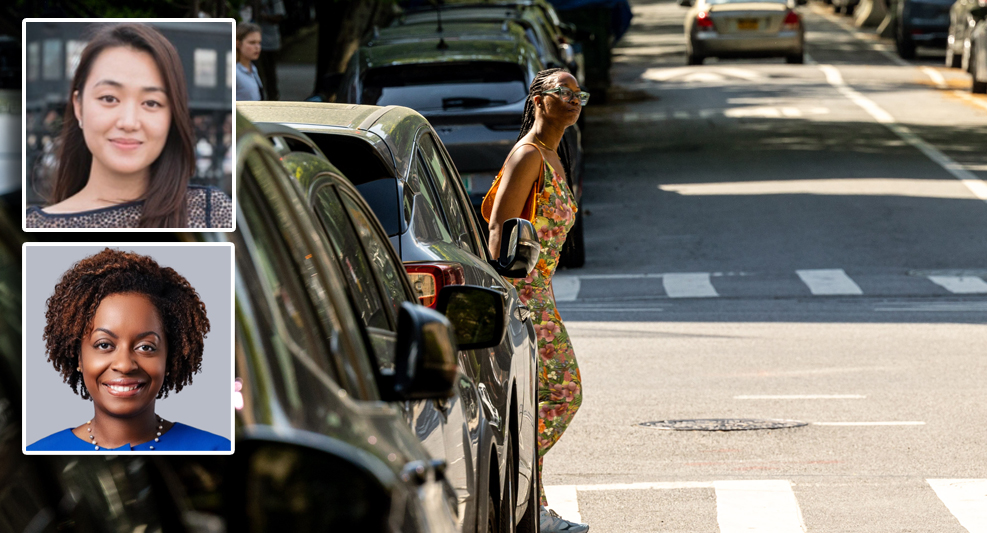Governor Cuomo made major commitments to transportation in his budget proposal for the next fiscal year — but advocates are quickly learning that where this budget document is concerned [PDF], Cuomo giveth and he also taketh away.
The budget makes good on a number of long-held goals of New York State transportation advocacy groups: State-approved expansion of the city's speed camera program. Unlimited bus lane cameras. Legalized e-bikes and e-scooters. A monetary goal and path forward for congestion pricing.
Nearly every single one of those new initiatives — save the bus lane cameras — comes with a catch.
"Governor Cuomo’s proposed budget is a combination of the good, the bad, and the ugly," said Eric McClure, executive director of StreetsPAC, the political group.
The speed camera shuffle
The good news: The governor's speed camera legislation would widen the definition of school speed zone to mean anywhere within a radius of 1,300 feet around a school, as opposed to the narrower definition of 1,300 feet on a street directly abutting its front entrance. It would also more than double — from 140 to 290 — the number of school zones in which cameras can operate.
The good news stops there. The city council passed a speed camera authorization law last year that did not cap their numbers. Further complicating matters, the governor's proposal would require that any money collected from the additional 150 school zone systems be given directly to the MTA to cover "capital initiatives for improvements to system safety." The city's speed camera revenue currently goes to its general fund.
"We’re happy to see that the governor’s including [cameras]," said Transportation Alternatives Interim Co-Director Marco Conner. "At the same time, we don’t think it should be limited to 290."
Council Speaker Corey Johnson was apparently blindsided by the cap on such important safety tool.
“The Council was proud to enact speed cameras in time for the school year, a crucial measure that undoubtedly saved lives,” Johnson told Streetsblog earlier this week. “I haven’t seen the proposal yet, but it does not seem like an expansion of the current law, which allows for an unlimited number of speed cameras.”
Congestion pricing contingencies
On congestion pricing, Cuomo set a reasonable revenue target of $1 billion per year — a wise move, according to transportation analyst Charles Komanoff, because congestion pricing will likely raise more. Setting a revenue target will also discourage the legislature from diluting the effectiveness of tolls with too many exemptions. He even promised to enact the policy by 2021.
But: the governor wants the city and state to split the costs of any capital needs beyond what congestion pricing can raise, even though New York City residents already foot most of the MTA's revenue via fares and taxes. The proposed budget also stipulates that the state will not hand over the $7.3 billion remaining of its delayed $8-billion commitment to the MTA's current capital plan until the Assembly passes congestion pricing and MTA governance reform. A plan for the latter has yet to be revealed, but Cuomo, who controls the MTA through the appointment of its chair and senior staff, has indicated that he wants even more power over its board.
As the MTA's website notes: "All Board members are appointed by the Governor, some on the recommendation of City and County officials in the MTA service region."
— Bob Hardt (@bobhardt) January 17, 2019
With those contingencies, the governor aims to incentivize the passage of those two initiatives by the state legislature, observers say. But the gambit could easily backfire.
"Linking unrelated issues is the kind of horsetrading that Albany was notorious for in the past and something we should look to avoid," Senate Democratic Conference spokesperson Michael Murphy told Politico, which reported the news on Wednesday.
E-bike and e-scooter shenanigans
The budget's e-bike language portends to give localities full control over the presence of currently illegal e-bikes and e-scooters on their streets. Unsurprisingly, reality is murkier: Cuomo also wants Draconian statewide regulations for their operation. The bill requires operators of both type of vehicle wear helmets and reflective gear after dark. It prohibits parents from installing child seats on e-bikes. And it would require e-bike riders to yield to motorists, essentially nullifying the city's Right of Way Law.
"Drivers have killed immigrant delivery e-bike workers in each of the past two months," said Do Lee of the Biking Public Project. "Governor Cuomo's plan would directly contribute to more immigrant delivery worker deaths."
The helmet requirement, meanwhile, would discourage people from riding e-scooters and e-bikes, making roads less safe for those who do. And reflective gear would lead to "overly subjective" enforcement, Conner warned, especially given the NYPD's unnecessary and burdensome practice of showering tickets and fines on working delivery cyclists.
The most insane part of Cuomo’s proposal: CARS WOULD ALWAYS HAVE THE RIGHT OF WAY OVER E-BIKES. (This would also nullify the NYC right of way law as to e-bikes.) /6 pic.twitter.com/482fnAiOt8
— BrandonWC (@BrandonWC) January 17, 2019
Still, it's not clear if the proposed law gives municipalities the ability to override any of those regulations. As written, e-bikes and e-scooters would only be legal in municipalities that pass their own legislation permitting their use. Those jurisdictions could then “further regulate the maximum speed, time, space and manner of … operation."
The only bit unequivocal good news in the budget: an unlimited expansion of bus lane cameras, to be mounted on buses or at fixed locations. Currently, state law limits camera enforcement of bus lanes to 10 routes citywide.
All of that is subject to negotiation with the state senate and assembly, which will each put out their own budgets in the coming weeks. The mayor and city council will also likely weigh in, as will advocates. For his part, StreetsPAC's McClure said the city should stick with its speed camera program and called the e-bike right of way rule a "non-starter."
The city's elected officials are still reviewing the massive budget, which tops 1,000 pages.
"I was glad to see a number of transportation items in the Governor’s proposal as we are facing a transportation crisis," City Council Speaker Corey Johnson said in a statement to Streetsblog. "The devil is in the details and I am reviewing the proposal in full."






